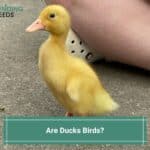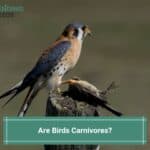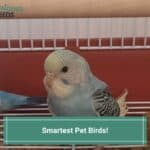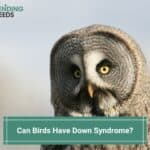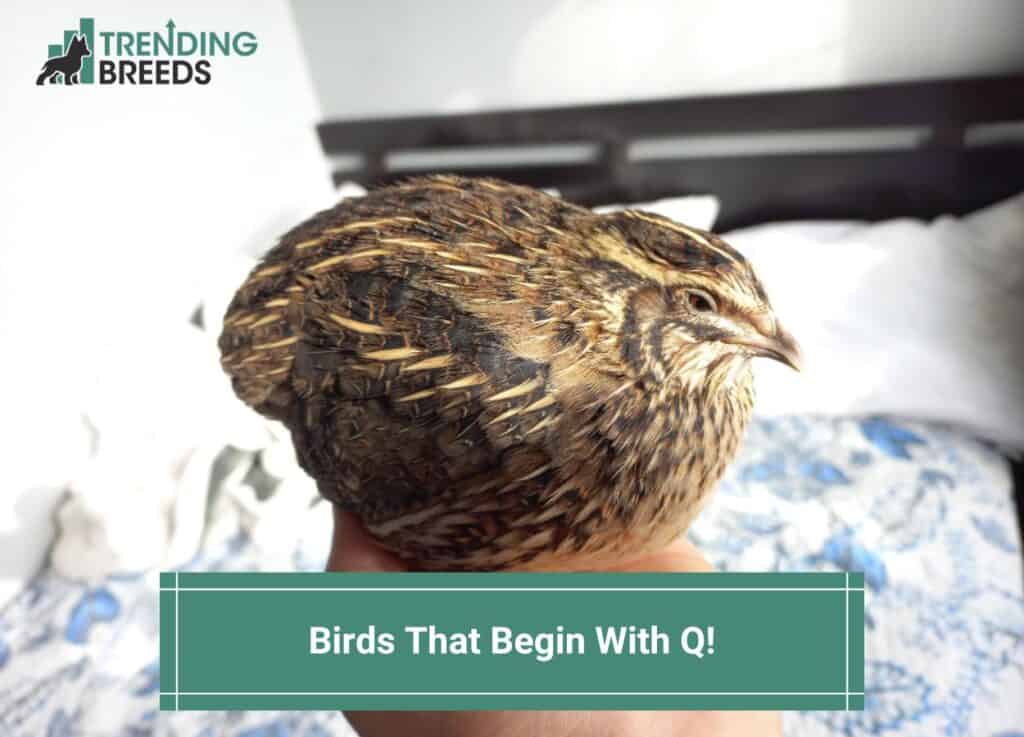
There are many types of birds on the planet. For centuries, scientists have given them all kinds of names. But it’s hard to come across a bird whose name starts with Q. What are some common bird species whose names start with Q?
After extensive research, we’ve compiled a list of 10 bird species whose names start with Q.
These include the Quail, Quebracho Crested Tinamou, Quailfinch, Quailfinch Indigobird, Quail-Plover, Quail Dove, Queen Whydah, Queen Victoria’s Riflebird, Quetzal, and Quelea Cardinal.
Keep reading below for more information.
Before you scroll further down this guide, check out these other bird-related articles: Why Do Birds Kiss? and Are Birds Carnivores?.
Table of Contents
10 Birds That Begin With Q
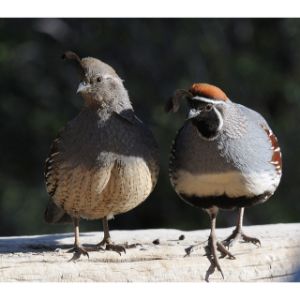
The following is a list of 10 birds whose names begin with Q.
1. Quail Bird
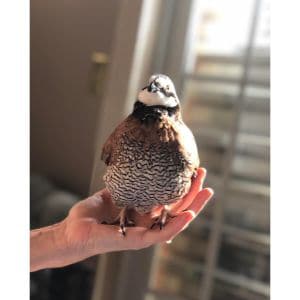
American quail are tiny, chubby, brown or gray birds found primarily in California. They can grow to a length of 7 inches and weigh 0.3 pounds. There are six recognized species of quail.
Mountain Quail
Gray, white, and chestnut feathers make this bird the family’s showpiece. There is also a fascinating plume on its head.
Scaled Quail
The gentle songs of this ground forager have made it famous. The scaled quail is stunning, even with its scaly-looking feathers and refined crest.
California Quail
It’s commonly known that these birds frequent California backyards. They are easily recognized by game hunters thanks to their distinctive head plumes. These birds build communal nests.
Northern Bobwhite
In the United States, this is one of the game birds that are most commonly found. Northern bobwhites are polygamous and can produce up to 20 offspring in their lifespan, significantly higher than the average bird.
Gambel’s Quail
Full and sporting a crest that points forward, this feathery beauty is up to 9 inches long with gray and chestnut-colored feathers. It is commonly found in Mohave County.
Common Quail
The European quail is another name for this bird. They are related to pheasants but are not particularly adept fliers. Females can lay approximately 13 spotted eggs, taking up to 20 days to hatch.
These birds tend to congregate near bodies of water, like rivers and lakes. In addition to insects and seeds, quail will also eat tiny animals.
Quail birds have been observed to nest in communal arrangements, with up to 28 eggs in a single nest. Fledging occurs when chicks are around 19 days old, after an incubation period of up to 20 days.
2. Quebracho Crested Tinamou
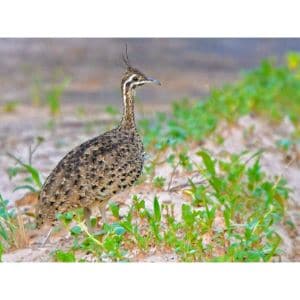
The Quebracho Crested Tinamou is easily identified by its call, which consists of two low whistles that gradually rise in pitch.
This species of bird, which lays its eggs on the ground, is exclusive to a small area in southern Argentina and Paraguay.
Tinamou are capable of flight but aren’t excellent pilots, so they spend most of their time on the ground. They can outpace their potential predators.
3. Quailfinch
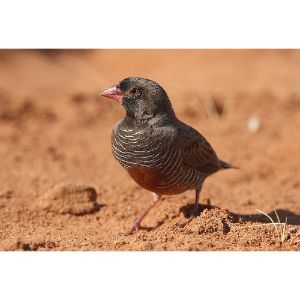
The quailfinch is a small African bird that inhabits scrublands and open forests. The three most common varieties are:
Black-Chinned Quailfinch
This bird is a member of the finch family. It has a small body (about four inches long), a red beak, a buffy brown underside, and a banded chest.
African Quailfinch
The African quailfinch can grow to be around 4 inches long and weigh up to 0.5 ounces. Characteristic features include a short tail, white eyering, black back, and white underside.
Black-Faced Quailfinch
Males have darker plumage, a white chin, and a red bill for eating seeds. The females are dark brown and have white eyeglass-like patterns. This bird exhibits sexual dimorphism.
They frequently travel in small groups and are easily recognizable by their rapid flight and loud calls. Quailfinches prefer seeds, but they may eat insects if necessary.
They construct grass cups and lay an average of three to four eggs. These birds tend to avoid human contact and are hence elusive.
4. Quailfinch Indigobird
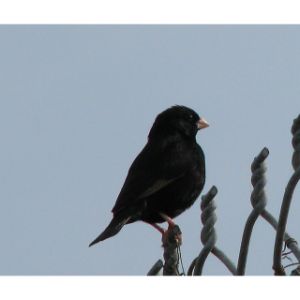
The quailfinch indigobird is a nest parasite that takes advantage of the nests of African quailfinches to produce its offspring.
They favor abundant open space and water habitats, such as grasslands and savannas.
Their sturdy, pointed beaks make them ideal seed and grain-eaters. These birds engage in parasitic reproduction, much like cuckoos.
This indicates that they lay their eggs in the nests of other species of birds. African Quailfinches are the only birds in their environment that build nests.
However, they cause no harm to the host’s eggs and merely supplement them with their own. They are excellent imitators and can accurately recreate the tune of African quailfinches.
5. Quail-Plover
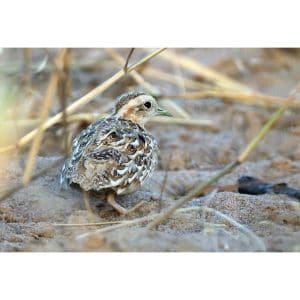
The quail-plovers are yet another avian species beginning with the letter Q. This little bird, which belongs to the family Turnicidae, can also be found in certain regions of Africa.
Despite its diminutive size (3 inches), this quail bird is naturally social, just like its other quail brethren.
It hops around, looking for food like grain and seeds. The legs and bill of a quail-plover are a pale yellow, and the bird’s overall appearance is brown with streaking and a cream underbelly.
Males tend to be a shade or two lighter than females. Scrubs and dry meadows are typical habitats for quail.
6. Quail Dove
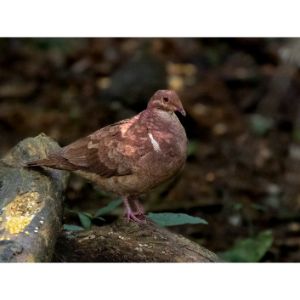
Quail doves are related to doves and pigeons and are found in the tropical regions of South America. This little-headed bird likes to hang out in thick woodlands where it can safely avoid danger.
These birds have a gray head with glossy green highlights, a gray chest, and a reddish-brown back. The white band under its eye stands out.
Quail doves can grow to be as long as 11 inches and thrive on a diet of seeds. The incubation period for a pair of buff-colored eggs laid by a female is 14 days. Parenting responsibilities are shared equally between males and females.
7. Queen Whydah
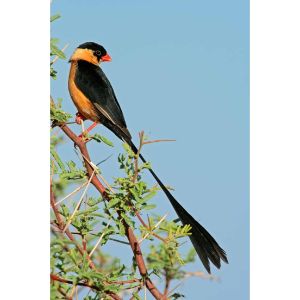
A tiny Whydah features orange-red body parts.
Some people refer to this bird as a “Shaft-tailed Whydah” because the male has a darker head and black feathers on his tail that are 17 centimeters in length during the breeding period.
The female has an orange-colored buff neck and underparts. The upper parts of nonbreeding females and males are streaked, while their underparts are pale and buffy.
While mating, males clear patches of arid, thorny scrub for themselves. After the breeding season has ended, though, they join forces with other seedeaters to form colonies.
The Queen Whydah, which can imitate the songs of the violet-eared Waxbill, lays its eggs parasitically in the nests of these birds.
Males and females of this bird species look different depending on the time of year.
The male changes appearance dramatically during the breeding season, when he develops a long tail and brightly colored plumage, but otherwise, he looks identical to the sparrow-like female.
8. Queen Victoria’s Riflebird
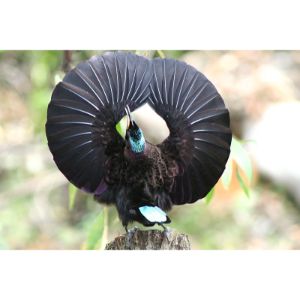
The Queen Victoria’s Riflebird is a massive paradise bird with a long, bent bill that points downward.
A metallic green and blue shimmer can be seen on the males’ neck, belly, and crown, but otherwise, they are virtually entirely black.
Females have a brown upper body and a buff underbelly. In addition to a bright brow, they also have a scaly patch on their stomach and chest. A Queen Victoria Riflebird’s cry is a loud, repetitive explosion of sound.
Males will stand on a stump with their wings spread high above their heads, making a roaring spectacle for onlookers. They raise their wings one at a time in this position while flashing bright yellow gaps.
Queen Victoria’s Riflebird is the tiniest of the riflebird species. Males have a bronze chest and underbelly and an emerald blue head. Their upper bodies are covered in a vibrant purple sheen.
A shiny blue triangle sits atop their heads, and a black velvet area is below it. Many different names, including “Lesser Riflebird” and “Victoria Riflebird,” are used to refer to these birds.
9. Quetzal
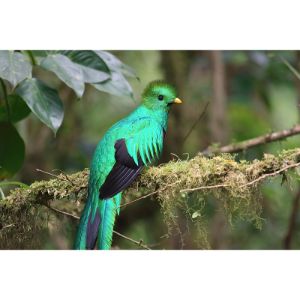
Is it possible to witness a live quetzal today? Indeed, it can be discovered in Mexico’s pine-covered mountains. Is it unusual to see a quetzal?
Indeed, their green feathers help them disappear into the foliage. Binoculars, however, make it simple to locate them.
The quetzal is one of the most stunning birds in the world. They have a remarkable appearance and can be found in the jungles of Central and South America.
The wings of these birds are tipped in black, and their bodies are a vibrant green. Most of them have very pink bellies.
Amazingly, their tails can grow to a whopping 20 inches in length. Take note of its little beak of yellow. The Quetzal is extremely fascinating to observe because of its unique habits.
One of the quickest fliers in the animal kingdom, this bird can travel up to 500 kilometers (310 miles) without resting.
10. Quelea Cardinal
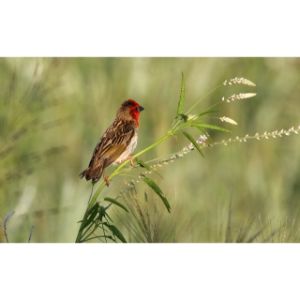
Quelea cardinals are little, red-headed birds that like grassy environments.
They are about the same size as a house sparrow. Females lack bright red plumage and have a yellowish face. This little bird likes to hang together in groups or colonies.
Frequently Asked Questions
Which bird is biggest flying bird?
The Great Kori Bustard is the largest flying bird in existence today.
What is the fastest bird?
The Peregrine falcon is the fastest bird in the sky, with a flight speed of more than 180 mph when diving.
What is the largest flying bird in North America?
California Condors are the largest birds in North America that fly. They have long, broad wings that take them through the sky.
What Birds Have Names That Begin With Q?
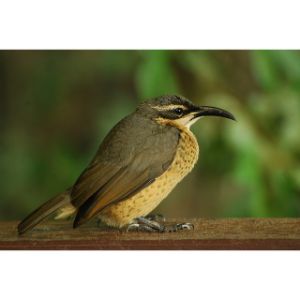
So, now you know a few bird species whose names start with Q.
You can share this information with your friends to show your extensive knowledge of birds, or you can use it to play and win games like Name, Place, Animal, and Thing.
If you find this guide, “Birds That Begin With Q,” informative and helpful, you can check out these other animal-related articles from our team:
You can learn more about quail birds by watching “Quail Bird | COOL FACTS ABOUT QUAIL BIRDS!” down below:

